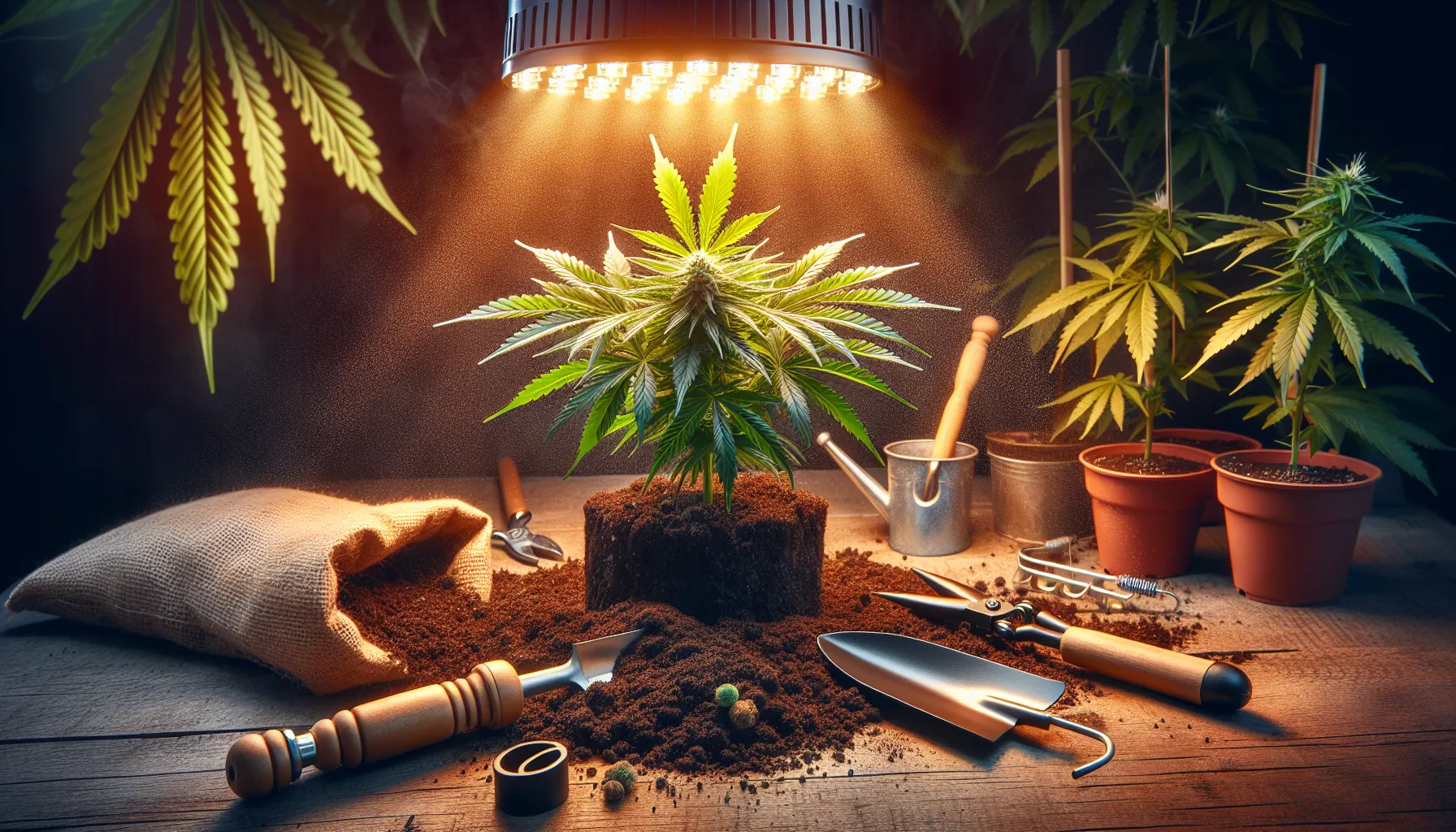Welcome to the World of Homegrown Cannabis

Welcome to the world of homegrown cannabis, where enthusiasts and cultivators alike seek to unlock the secrets of cultivating this versatile plant. Whether you’re a seasoned grower or a curious beginner, understanding the intricacies of homegrown cannabis can lead to a rewarding and fulfilling experience. From selecting the right strains and optimizing growing conditions to harvesting and processing the final product, there’s a wealth of knowledge waiting to be discovered. In this exploration, we’ll delve into the essential techniques, tools, and insights that can empower you to cultivate high-quality cannabis in the comfort of your own home. Get ready to embark on a journey that combines horticultural expertise with the art of cannabis cultivation, as we uncover the secrets that can elevate your homegrown cannabis endeavors to new heights.
Selecting the Right Strain
When it comes to cultivating cannabis at home, selecting the right strain is crucial for a successful and fulfilling experience. Understanding the different strain types and choosing the ideal one for your home cultivation is essential for achieving the desired results.
Understanding Different Strain Types
Cannabis strains can generally be categorized into three main types:indica, sativa, and hybrid. Indica strains are known for their relaxing and sedating effects, making them suitable for evening or nighttime use. On the other hand, sativa strains are more energizing and uplifting, making them ideal for daytime consumption. Hybrid strains are a cross between indica and sativa, offering a blend of both effects.
Choosing the Ideal Strain for Home Cultivation
When selecting a strain for home cultivation, consider factors such as available space, climate, and personal preferences. Some strains may be better suited for indoor cultivation, while others thrive in outdoor environments. Additionally, certain strains may require specific climate conditions to flourish, so it’s important to choose a strain that aligns with your local climate. Furthermore, understanding the cannabinoid and terpene profiles of different strains can help you select one that aligns with your desired effects and flavors.
Ultimately, the ideal strain for home cultivation is one that not only suits your growing environment but also aligns with your desired effects and experiences. By taking the time to understand the different strain types and considering various factors, you can make an informed decision that sets the foundation for a successful home cultivation journey.
Setting Up Your Homegrown Cannabis Garden
When it comes to cultivating cannabis at home, one of the first decisions you’ll need to make is whether to grow your plants indoors or outdoors. Each option has its own set of advantages and considerations. Indoor cultivation provides greater control over environmental factors such as temperature, humidity, and light cycles. This control allows for year-round cultivation and the ability to grow strains that may not be well-suited for outdoor conditions. On the other hand, outdoor cultivation harnesses the power of natural sunlight and can lead to larger yields. It’s important to assess your available space, local climate, and legal regulations before making a decision.
Once you’ve decided on the cultivation environment, it’s time to gather the essential supplies and equipment. For indoor cultivation, this may include grow lights, fans, a ventilation system, pots or hydroponic systems, and a reliable nutrient solution. Outdoor cultivation requires items such as soil amendments, watering tools, pest control measures, and possibly a greenhouse or protective fencing. Quality seeds or clones, along with a solid understanding of the growth process, are also crucial to success. By investing in the right tools and resources, you can set the stage for a thriving cannabis garden.
Caring for Your Homegrown Cannabis Plants
Soil and Nutrient Management
One of the most crucial aspects of growing healthy cannabis plants is ensuring proper soil and nutrient management. Start by choosing high-quality soil that is well-draining and rich in organic matter. Consider adding perlite or coco coir to improve drainage and aeration. Additionally, using organic fertilizers can help provide essential nutrients to the plants without the risk of chemical buildup. Regularly test the pH levels of the soil to ensure it remains within the optimal range for cannabis cultivation.
Optimizing Lighting and Temperature
Proper lighting and temperature control are essential for the successful growth of cannabis plants. When growing indoors, invest in full-spectrum LED grow lights that mimic natural sunlight. Position the lights at an appropriate distance from the plants to prevent light burn or heat stress. Additionally, maintaining the ideal temperature range of 70-85°F during the day and slightly lower at night is crucial for healthy plant development. Consider using fans or ventilation systems to regulate temperature and prevent stagnant air.
Preventing Pests and Diseases
Protecting your cannabis plants from pests and diseases is vital to ensure a bountiful harvest. Implement preventive measures such as regularly inspecting the plants for any signs of infestation or disease. Introduce beneficial insects like ladybugs or predatory mites to control common pests such as aphids or spider mites. Additionally, consider using organic pesticides or neem oil to deter pests while minimizing harm to beneficial insects and the environment. Proper sanitation practices, such as cleaning gardening tools and maintaining a tidy growing area, can also help prevent the spread of diseases.
Harvesting and Processing Your Homegrown Cannabis
Congratulations! You’ve successfully grown your own cannabis plants, and now it’s time to harvest and process them. This section will guide you through determining the right harvest time, drying and curing techniques, as well as trimming and proper storage.
Determining the Right Harvest Time
Knowing when to harvest your cannabis plants is crucial for achieving the desired potency and flavor. The ideal time to harvest is when the trichomes, the tiny resin glands on the buds, have turned from clear to cloudy or amber. Use a magnifying glass to closely inspect the trichomes and ensure they have reached the desired color. Additionally, pay attention to the pistils (hairs) on the buds; they should have changed color from white to darker hues. Harvesting at the right time will result in a more potent and flavorful end product.
Drying and Curing Techniques
Once harvested, the next step is to dry and cure the buds. Proper drying and curing are essential for enhancing the aroma, flavor, and overall smoking experience. Hang the trimmed buds in a dark, well-ventilated room with a temperature of around 60-70°F and a humidity level of 45-55%. Allow the buds to dry for 7-10 days, depending on the size and density. After drying, transfer the buds to airtight containers for the curing process. Burp the containers daily to release excess moisture and promote even curing. Curing can take anywhere from 2-8 weeks, and the longer the cure, the smoother and more flavorful the smoke.
Trimming and Proper Storage
After the buds have been dried and cured, it’s time to trim off any remaining leaves and stems. Trimming not only improves the appearance of the buds but also enhances the smoking experience. Use trimming scissors to carefully remove excess plant material while preserving the shape and structure of the buds. Once trimmed, store the cannabis in airtight glass jars in a cool, dark place. Proper storage is crucial for maintaining the potency and flavor of the buds. Keep the jars away from light and heat, and check for any signs of mold or mildew regularly.
By following these steps for harvesting and processing your homegrown cannabis, you can ensure a high-quality end product that delivers a satisfying and enjoyable experience.
Understanding Potency and Consumption
Methods of Consumption
When it comes to consuming cannabis, there are various methods available, each offering unique experiences. Smoking is one of the most common methods, providing quick onset and easy dosage control. Vaporizing is another popular option, offering a smoother experience and potentially fewer respiratory issues. Edibles are a discreet and long-lasting option, but require careful dosing due to delayed onset. Other methods include tinctures, topicals, and concentrates, each with its own advantages and considerations.
Understanding Potency and Dosage
Potency refers to the strength of cannabis products, typically measured by the concentration of cannabinoids such as THC and CBD. It’s crucial for consumers to understand potency to make informed choices and avoid adverse effects. Dosage plays a vital role in achieving the desired effects while minimizing potential risks. Factors such as tolerance, metabolism, and individual sensitivity can influence the ideal dosage for each person. It’s essential to start with low doses, especially for beginners, and gradually adjust based on individual responses.
Conclusion
Homegrown cannabis cultivation can be a rewarding and fulfilling experience for individuals seeking to harness the benefits of this versatile plant. By understanding the signs and signals that cannabis plants exhibit, growers can optimize their growth and yield. The webpage at. jgseeds Offers valuable insights into identifying signs in cannabis plants, along with expert advice on fixing stretching plants for optimal results. For those interested in delving deeper into the world of homegrown cannabis, this resource provides a wealth of information and access to affordable, Farm Bill compliant cannabis seeds. Whether you’re a seasoned cultivator or just starting out, this webpage is a valuable asset for anyone looking to enhance their cannabis cultivation journey.
To explore more about identifying signs in cannabis plants and accessing affordable cannabis seeds, visit. jgseeds . Unlock the secrets of successful homegrown cannabis today!.










